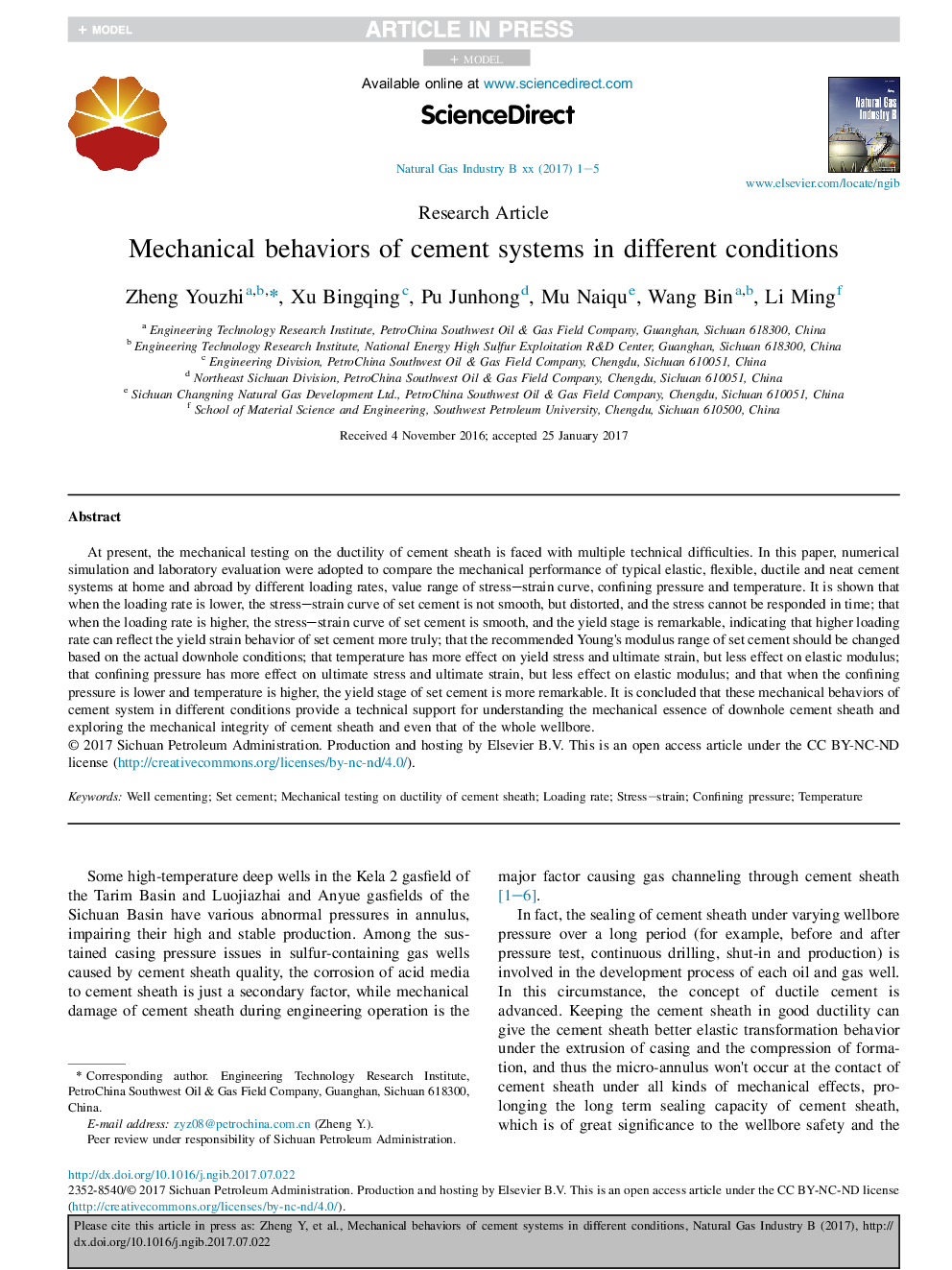| Article ID | Journal | Published Year | Pages | File Type |
|---|---|---|---|---|
| 8109754 | Natural Gas Industry B | 2017 | 5 Pages |
Abstract
At present, the mechanical testing on the ductility of cement sheath is faced with multiple technical difficulties. In this paper, numerical simulation and laboratory evaluation were adopted to compare the mechanical performance of typical elastic, flexible, ductile and neat cement systems at home and abroad by different loading rates, value range of stress-strain curve, confining pressure and temperature. It is shown that when the loading rate is lower, the stress-strain curve of set cement is not smooth, but distorted, and the stress cannot be responded in time; that when the loading rate is higher, the stress-strain curve of set cement is smooth, and the yield stage is remarkable, indicating that higher loading rate can reflect the yield strain behavior of set cement more truly; that the recommended Young's modulus range of set cement should be changed based on the actual downhole conditions; that temperature has more effect on yield stress and ultimate strain, but less effect on elastic modulus; that confining pressure has more effect on ultimate stress and ultimate strain, but less effect on elastic modulus; and that when the confining pressure is lower and temperature is higher, the yield stage of set cement is more remarkable. It is concluded that these mechanical behaviors of cement system in different conditions provide a technical support for understanding the mechanical essence of downhole cement sheath and exploring the mechanical integrity of cement sheath and even that of the whole wellbore.
Related Topics
Physical Sciences and Engineering
Energy
Energy Engineering and Power Technology
Authors
Youzhi Zheng, Bingqing Xu, Junhong Pu, Naiqu Mu, Bin Wang, Ming Li,
